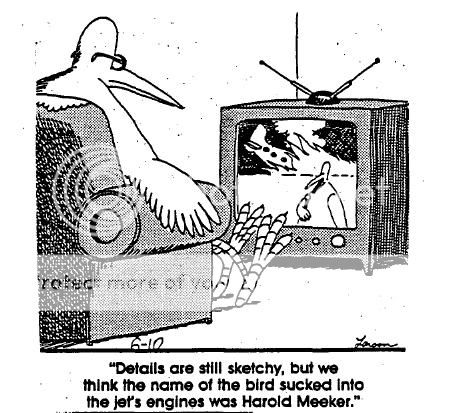azure
Final Approach
I hit a bird in cruise at 3500 feet this evening, a glancing blow (to the plane obviously, not the bird). It hit the pilot's side wing root right above my head. I don't think it came through the prop arc at all. The wing root is bloodied up and has some deep scratches in the skin, probably from the beak or talons (I'm guessing this was a small hawk, given the altitude and time of day), and the vertical stab is sprayed with blood too. There are a couple spots of blood on the corner of the windshield too. I can't tell for sure if there's a crack in the wing root skin, it seems too straight for a scratch but doesn't separate when pressed. My mechanic wants to clean it up and make the final determination when he gets back from out of town tomorrow night.
Last edited:
















